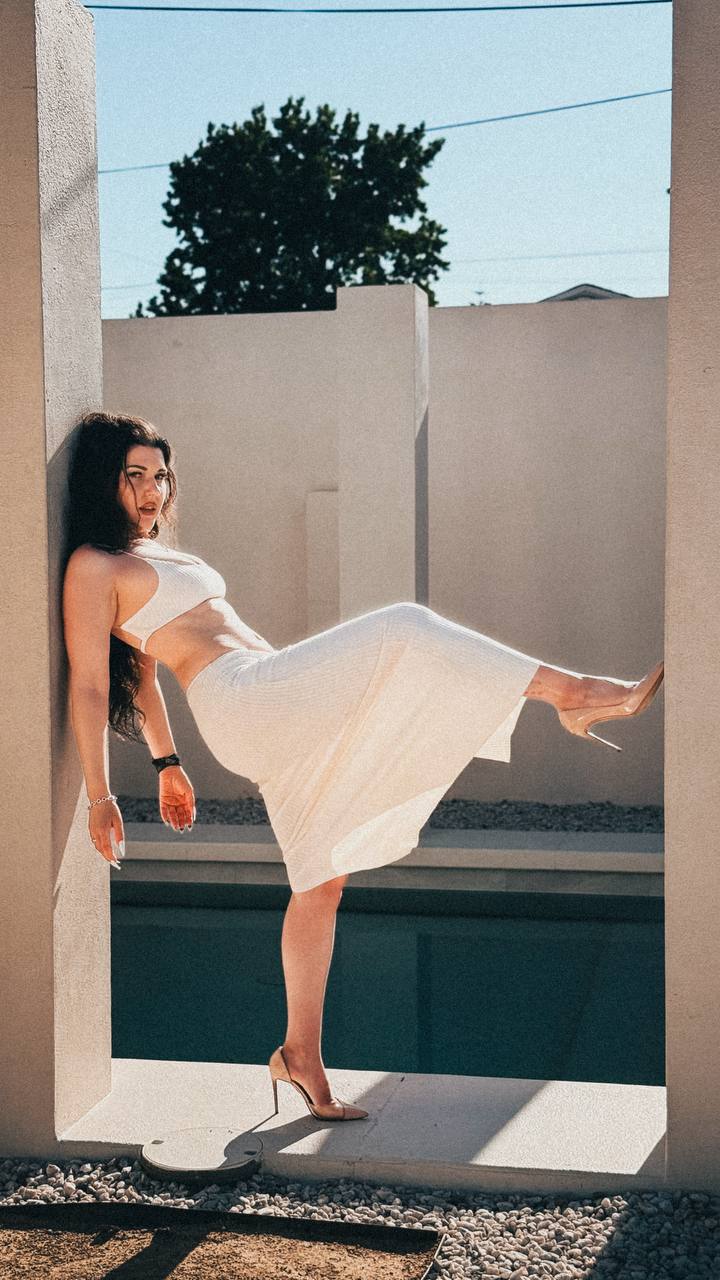By: Lana Khachiyan
About Maria Skakun:
Originally from Russia, Maria Skakun is a multidisciplinary director and producer with a background in large-scale live shows, immersive theater, and cinematic performance work. A graduate with honors from the Russian State University of Physical Education and Sports, Maria has directed for stadiums, theme parks, and internationally recognized productions. Her creative career spans across genres — from immersive horror to pop concerts and performance art — always rooted in emotionally resonant storytelling and bold visual language. Now based in the U.S., she continues to create genre-defying work that blends film, theater, and physical performance.
Q: Maria, MANIC is one of the most original, genre-bending solo shows we’ve seen in years. How did you get involved with the project?
MANIC was created by Roxana Baldovin. She had been developing the material for over three years — it was personal, layered, and packed with visual and emotional references. She brought me in as co-director and producer because of my experience working across live performance, immersive theater, film, and large-scale events. I’ve directed stadium shows, immersive mazes, and cinematic live activations — so I came in with a clear understanding of how to blend mediums and build rhythm. The show already had its soul — my job was to help give it shape and flow.

Q: What were the first things you wanted to focus on when you joined the creative process?
This wasn’t a conventional theater piece. It jumps across genres — stand-up, childhood flashbacks, surreal fantasy, musical parody, voiceover, screen interaction — often all in a few minutes. My first focus was pacing: how to let the show move fast without losing clarity. We also had to map out what belonged on stage and what lived on screen — and how those two could interact. Roxana speaks to the screen throughout the show, so every transition and timing beat had to be precise. We rehearsed the timing over and over to make it seamless.
Q: There’s a very fast, layered energy to the show — like flipping through a mental scrapbook. How did you approach that from a director’s perspective?
We approached it like we were editing a film, but live. There are constant shifts in voice, time, and tone. We treated every new section like its own scene, but with one throughline running underneath. From a technical side, that meant designing cues, lighting, blocking, and screen content in a way that felt fluid — but always emotionally grounded. Roxana switches characters quickly, and we had to make sure the audience could follow the logic even when the world itself was shifting. It’s a show that lives in memory, fantasy, and pop culture all at once.
Q: There’s also a lot of comedy in MANIC — dark, absurd, sometimes uncomfortable. How do you balance humor with the rest of the show?
We never used comedy to soften anything — it’s baked into the DNA of the show. Humor is how this character survives, how she performs, how she processes. So instead of pulling back, we leaned into it. But it was important to make sure the comedic moments never undercut the truth. Timing was everything. There were scenes that played like sketches, and others that were more theatrical — and we had to make sure the show never lost its sense of rhythm or sincerity.
Q: For those who haven’t seen it yet — how would you describe MANIC in one sentence?
A chaotic love letter to identity, ambition, and the voices that shape you.
Q: You’ve worked internationally — from live shows and immersive events to film and now theater. How has that diversity shaped your artistic process?
I’ve directed everything from circus-inspired performances to immersive horror experiences and music-driven visuals. I studied directing and producing in Russia and built my career working across formats. That gave me an instinct for structure — even in chaotic or nonlinear work.
I know how to anchor a project emotionally while still allowing it to be wild, funny, or visually experimental. And that was exactly what MANIC needed — someone who could hold all the layers while keeping the vision sharp.
Q: What’s something people might not realize about the role of a co-director and producer in a show like this?
That you’re not just managing logistics — you’re in the creative trenches. You’re helping build tone, rhythm, emotional clarity, and also handling the reality of timelines, budgets, and execution. On a solo show like this, you’re also the mirror. You’re the person saying, “This moment isn’t landing,” or “We need a beat here.” And at the same time, you’re making sure every moving part — especially between stage and screen — functions as a whole.
Q: What are you most proud of with this project?
That we stayed true to the chaos. We didn’t try to make it easy or digestible. It’s fast, it’s unpredictable, and it’s full of heart. And we built it our way — from scratch — and it worked.






